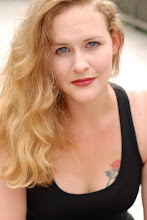Published by Random House.
"I say just get over it. It's life, Emma, for God's sake. Suck it up." So says Susie Dell on page 119 of the novel, but Emma refuses to suck it up for at least a hundred more pages.
Emma Gilford is a boring woman who seems to have done absolutely nothing with her life or had any meaningful contact with anyone for at least twenty years, and one phone call from an old boyfriend is enough to throw her over the edge. She starts to question her boring existence, her wussy attitude, and, well, not much else because she's been under a rock for so long. She refuses to do anything interesting for the entirety of the novel, unless you're into complaining and blaming everyone else for one's own problems. The novel picks up near the end, when the action focuses on the more interesting characters; but told through the dishwater voice of Emma Gilford, it's not enough to make this worth reading.
Throughout the novel Emma whines about how her sisters mistreated her as a child, and I think to myself, "You're in your forties. Get over it already. Grow a bloody spine." She makes a big deal out of tiny tasks she's expected to do for a big family reunion, like make a reservation at a park and pick up plates at the store, and I say, "Really? Just fucking do it." I wonder how Emma Gilford could waste so much of her time not doing what she's supposed to do to plan this party, then complaining about it, then complaining about the fact that she's expected to do it. And I wonder why I'm wasting my time reading about it. (But at least I did manage to get around to it.)
Throughout the novel is the question of whether Emma will ever get together with Samuel, her once-boyfriend who ran off to Nicaragua to do some botany. He calls and calls but never makes an appearance. He just provides more fodder for Emma to engage in reminiscent self-reflection that leads to more self-pity and whining. I was hoping that by the end of the novel, something actually interesting would happen, but no. The moment we are intended to take as the turning point between old boring Emma and new, less sedentary Emma (though probably still boring) is at the very end where she is about to call him. Which means, of course, that the reader is never provided access to anything but boring, whiny, adolescent Emma who, were I ever to meet her, would certainly be on my "Do Not Invite" list for parties.
